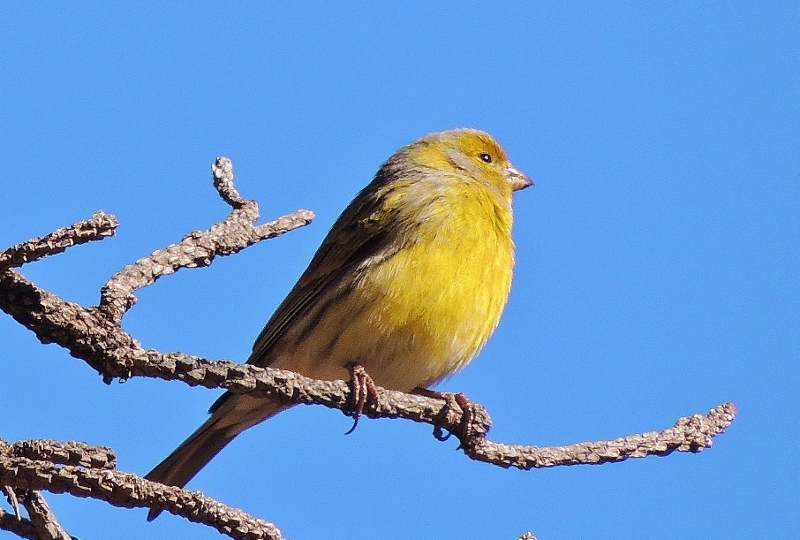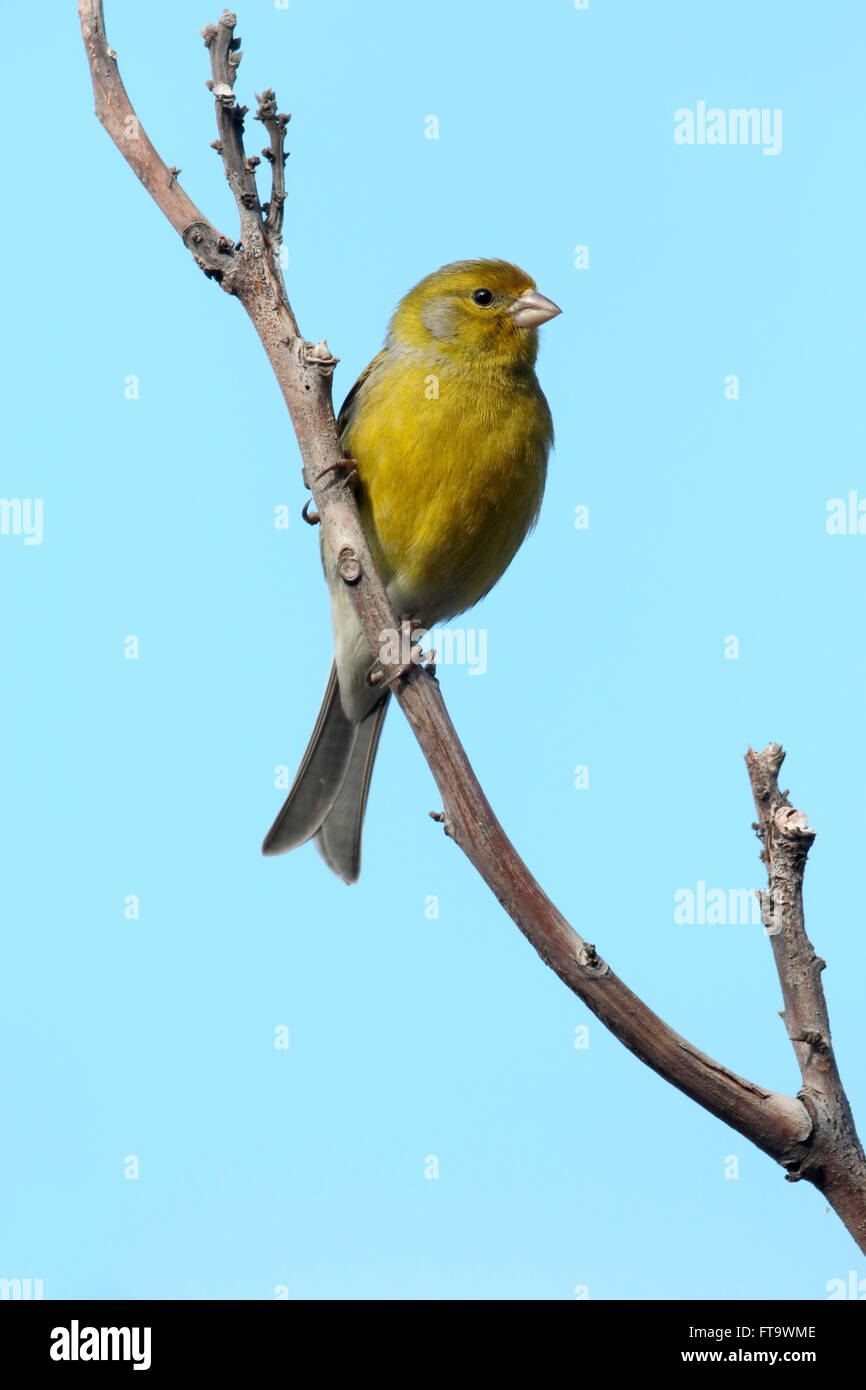

The species also occurs in Puerto Rico, but is not yet established there. Birds were introduced to Bermuda in 1930 and quickly started breeding, but they began to decline in the 1940s after scale insects devastated the population of Bermuda cedar, and by the 1960s they had died out. It was also introduced to neighbouring Kure Atoll, but failed to become established.

It has become established on Midway Atoll in the northwest Hawaiian Islands, where it was first introduced in 1911. It is found from sea-level up to at least 760 m in Madeira, 1,100 m in the Azores and to above 1,500 m in the Canary Islands. It frequently occurs in man-made habitats such as parks and gardens. It is most common in semiopen areas with small trees such as orchards and copses. It occurs in a wide variety of habitats from pine and laurel forests to sand dunes. The population has been estimated at 80,000-90,000 pairs in the Canary Islands, 30,000-60,000 pairs in the Azores and 4,000-5,000 pairs in Madeira. In the Azores, it is common on all islands.

It is common in Madeira including Porto Santo and the Desertas Islands, and has been recorded on the Salvage Islands. In the Canary Islands, it is common on Tenerife, La Gomera, La Palma and El Hierro, but more local on Gran Canaria, and rare on Lanzarote and Fuerteventura, where it has only recently begun breeding. It is endemic to the Canary Islands, Azores and Madeira in the region known as Macaronesia in the eastern Atlantic Ocean. The colour canary yellow is in turn named after the yellow domestic canary, produced by a mutation which suppressed the melanins of the original dull-greenish wild Atlantic canary colour. A legend of the islands, however, states that it was the conquistadors who named the islands after a fierce tribe inhabiting the largest island of the group, known as the 'Canarii'. The islands' name is derived from the Latin name canariae insulae ("islands of dogs") used by Arnobius, referring to the large dogs kept by the inhabitants of the islands.

The bird is named after the Canary Islands, not the other way around. The phylogeny has been obtained by Antonio Arnaiz-Villena et al. The Atlantic canary's closest relative is the European serin, and the two can produce on average 25% fertile hybrids if crossed. Decades later, Cuvier reclassified them into the genus Serinus and there they have remained. Linnaeus originally classified the Atlantic canary as a subspecies of the European serin and assigned them to the genus Fringilla. The Atlantic canary was classified by Linnaeus in 1758 in his Systema Naturae. Hybridization with white-rumped seedeater has been noted by Antonio Arnaiz-Villena et al. The song is a silvery twittering similar to the songs of the serin and citril finch. It is about 10% larger, longer and less contrasted than its relative the European serin, and has more grey and brown in its plumage and relatively shorter wings. Juvenile birds are largely brown with dark streaks. The female is similar to the male but duller with a greyer head and breast and less yellow underparts. The upperparts are grey-green with dark streaks and the rump is dull yellow. The lower belly and undertail-coverts are whitish and there are some dark streaks on the sides. The male has a largely yellow-green head and underparts with a yellower forehead, face and supercilium. The wild Atlantic canary can range from 10 to 12 cm (3.9 to 4.7 in) in length, with a wingspan of 21 to 23.7 cm (8.3 to 9.3 in) and a weight of 8.4 to 24.3 g (0.30 to 0.86 oz), with an average of around 15 g (0.53 oz).


 0 kommentar(er)
0 kommentar(er)
